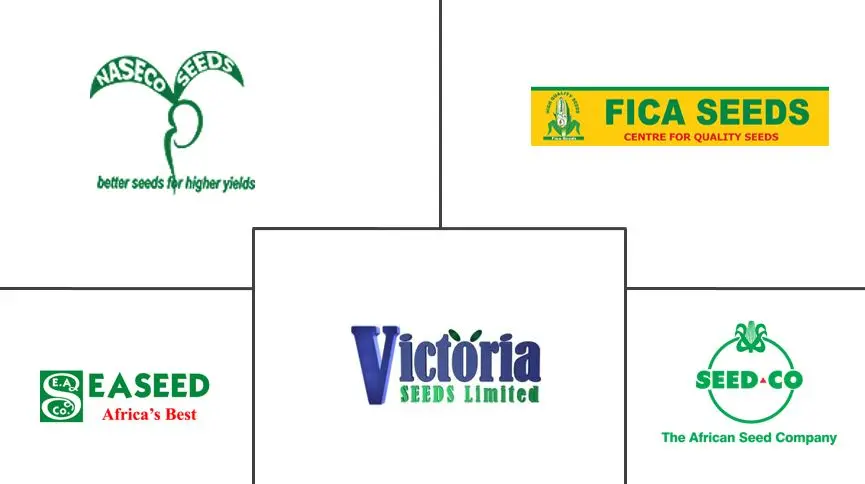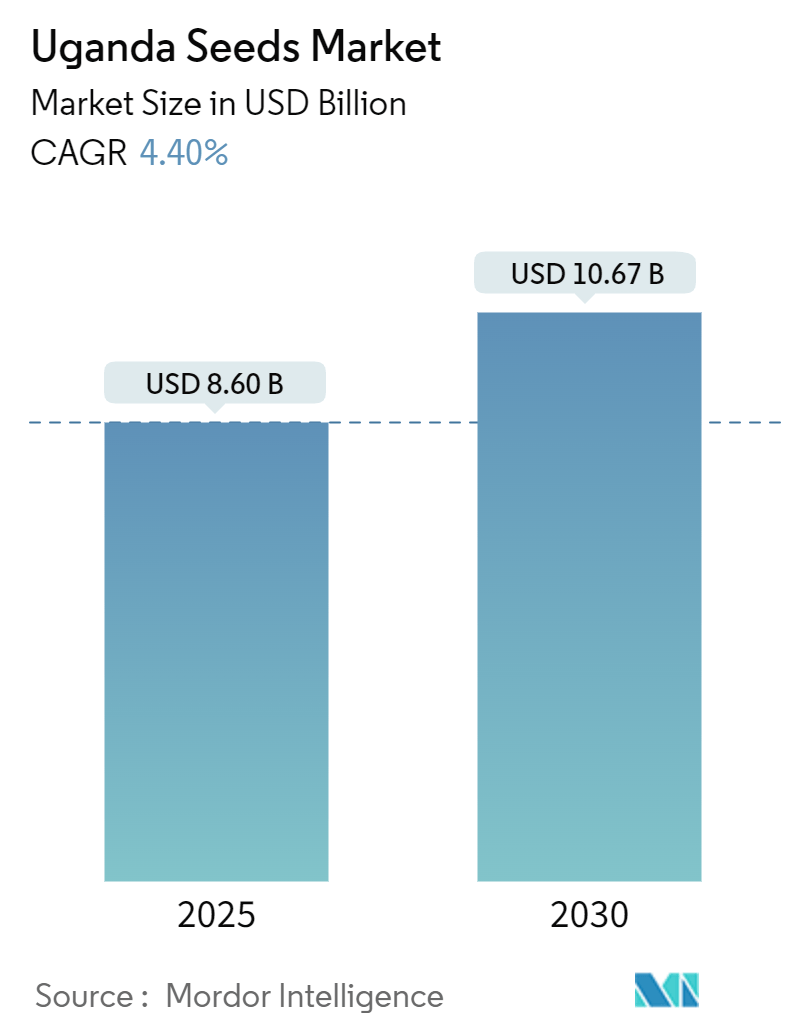
Uganda Seeds Market Analysis
The Uganda Seeds Market size is estimated at USD 8.60 billion in 2025, and is expected to reach USD 10.67 billion by 2030, at a CAGR of 4.40% during the forecast period (2025-2030).
- The seed industry in Uganda encompasses the production and marketing of major and minor crop species, including field crops and vegetables. The market growth is driven by increasing crop production from the developing agriculture sector and the introduction of new seed varieties adapted to the country's climate.
- Uganda's agricultural potential ranks among the best in Africa, featuring stable temperatures, fertile soils, and biannual rainy seasons that enable multiple crop harvests yearly. According to the Food and Agriculture Organization of the United Nations, Uganda's fertile agricultural land can potentially feed 200 million people. While 80% of Uganda's land is arable, only 35% is currently under cultivation. This substantial untapped agricultural potential drives the seed market, as seeds remain the fundamental agricultural input.
- The Ugandan seed industry operates through private ownership, comprising small to medium-scale companies and select multinational corporations. The industry functions through two distinct supply systems: informal and formal. The formal system, which is fully regulated and represents 20-30% of the market, shows rapid growth with registered local and international seed companies. The National Seed Certification Service (NSCS), operating under the Ministry of Agriculture, Animal Industry, and Fisheries (MAAIF), oversees seed variety certification and industry regulation.
Uganda Seeds Market Trends
Maize Dominates the Grains and Cereals Segment
- Maize serves as Uganda's primary cereal crop, contributing over 40% of caloric intake across rural and urban populations. The crop has established itself as a fundamental food source throughout the country. Small-scale farmers, representing 80% of the rural poor population, generate the majority of maize production. According to the National Agriculture Advisory Services, maize cultivation directly supports the livelihoods of more than 2 million households. The main maize-producing regions include Iganga, Mubende, Soroti, Kabarole, Masaka, Kamuli, and Tororo.
- The Uganda Bureau of Statistics reports that maize production reached 4.7 million metric tons in 2022, marking a 34.3% increase from the previous year, while maintaining the same cultivation area. This growth stems from the increased adoption of quality inputs, particularly improved seeds. The National Agriculture Advisory Services indicates that seeds represent 13% of total input costs in high-input maize production and 23% in low-input production, demonstrating the cost-effectiveness of certified seeds in achieving higher yields.
- Farmers, particularly in the Mubende district, face challenges including limited knowledge of quality standards and post-harvest management practices. Additional constraints include reduced rainfall resulting in crop failure, widespread pastures, and water scarcity. To address these challenges, farmers are gaining access to improved maize varieties with enhanced climate and disease resistance. In 2023, the Nalweyo Seed Company (NASECO) introduced two stress-tolerant hybrids: DT MAX 15 and TURBO 71. Additionally, Uganda's national variety release committee launched four drought-tolerant varieties: WE1101, WE3103, WE3106, and WE3109. These developments indicate potential market growth in the forecast period.
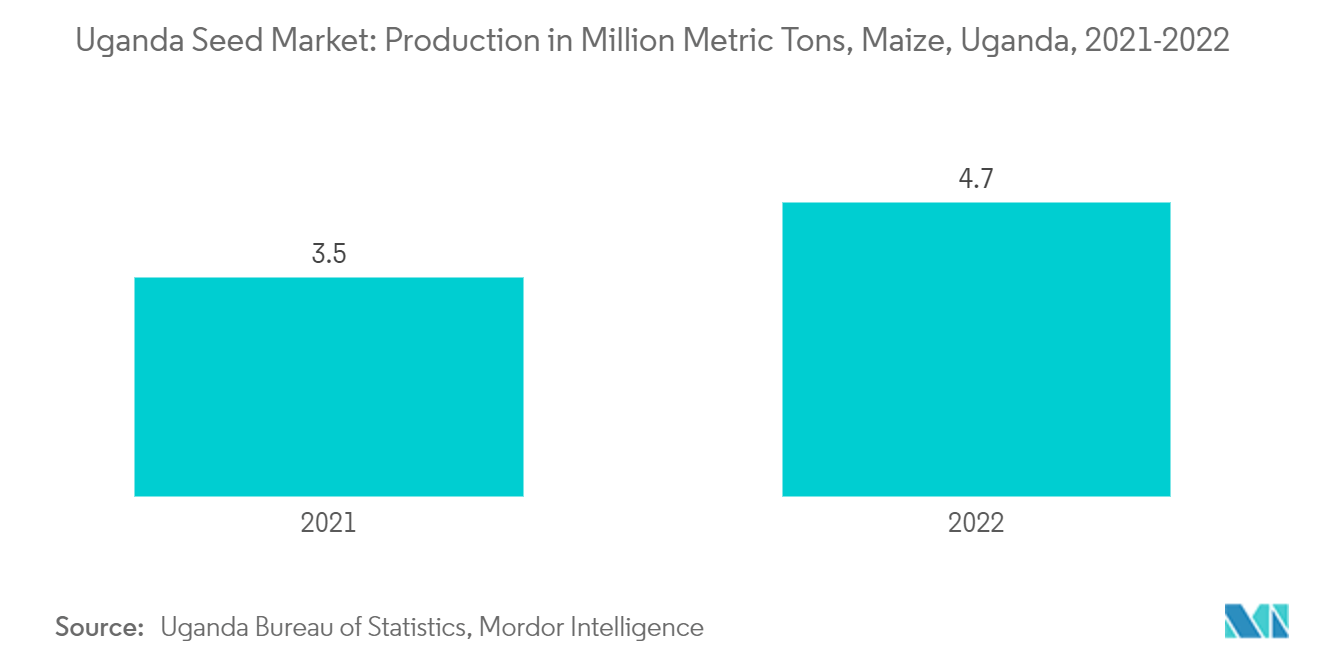
Hybrid Seeds Hold the Major Share in the Market
- Farmers are adopting hybrid seeds due to their enhanced yields, uniformity, color quality, and disease resistance. The adoption has resulted in improved yields and increased profits for agricultural producers.
- In Uganda, farmers are achieving higher profits through increased productivity from hybrid technology. Climate-resilient crops protect farmers from crop switching or losses during adverse weather conditions. These hybrid varieties deliver high yields and withstand various biotic and abiotic stresses. While high-yielding hybrids offer significant benefits, farmers face implementation challenges. Proper training and support enable farmers to maximize hybrid technology benefits.
- Grains and cereals constitute the largest share of the hybrid segment. Maize dominates this category due to expanded harvest areas, increased commercial seed usage, and growing demand from processing industries. Maize maintains the largest segment share as genetically modified maize cultivation remains unauthorized, while demand remains high for consumption and industrial processing.
- The WE1101 hybrid maize variety, developed for drought tolerance, demonstrates superior performance compared to traditional varieties. These hybrids show increased resistance to northern corn leaf blight, gray leaf spot, maize streak virus, and maize lethal necrosis. According to CYMMET research, drought-tolerant maize hybrid adoption increased yields by 15% and reduced crop failure risk by 30% in 2022. These factors are expected to drive hybrid seed demand during the forecast period.
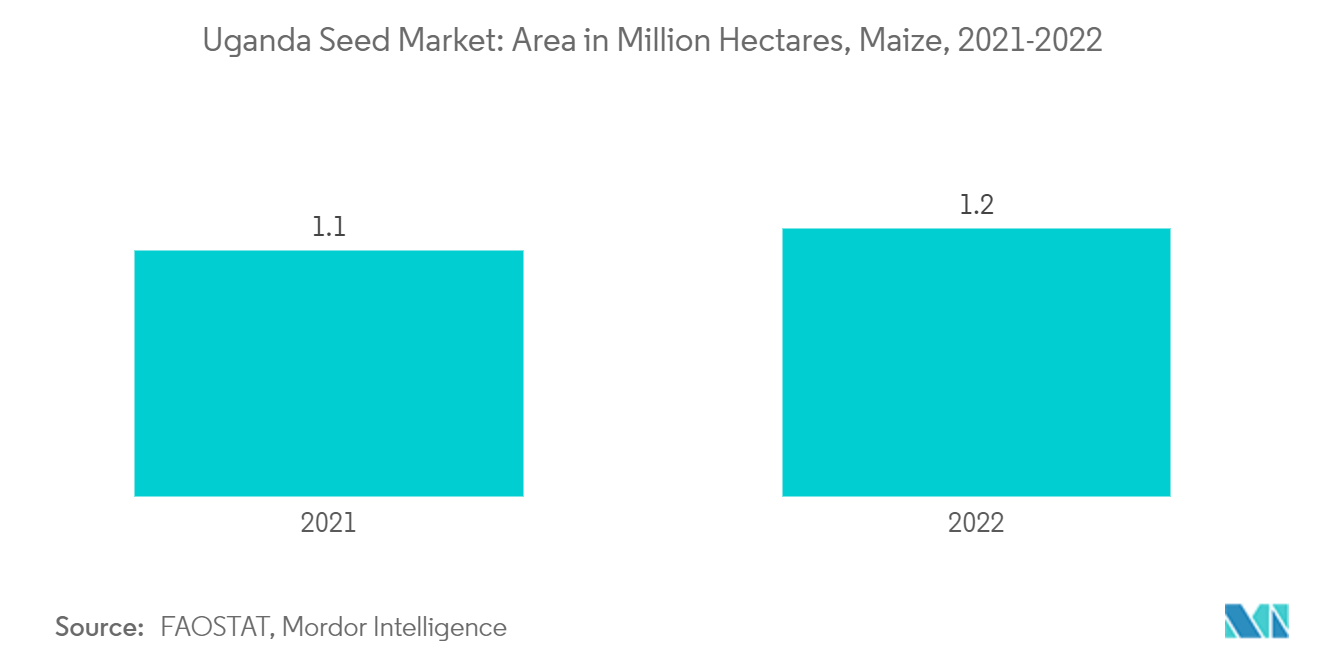
Uganda Seeds Industry Overview
The Uganda seed market is fragmented with local and multi-national players' presence in the market. Victoria Seeds, NASECO, FICA Seeds, Seed Co Limited, and East African Seed Company Ltd are the few active players in the market. The most adopted strategies among the players include expansion and product innovations.
Uganda Seeds Market Leaders
-
Victoria Seeds
-
NASECO
-
FICA Seeds
-
East African Seed Company Ltd.
-
Seed Co Limited
- *Disclaimer: Major Players sorted in no particular order
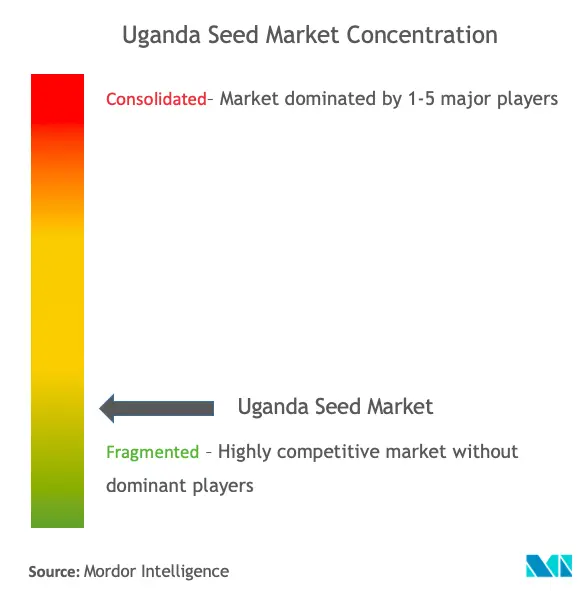
Uganda Seeds Market News
- July 2023: Nalweyo Seed Company (NASECO) released the DT MAX 15 and TURBO 71 maize hybrids in Uganda, which are high-yielding and tolerant to stress.
- August 2022: The Government of Uganda, with support from the Government of the Republic of Korea through the Korea International Cooperation Agency (KOICA), has launched a nine-year project to develop new varieties of vegetables, strengthen seed certification capacity, and improve the technical skills of vegetable farmers.
- July 2022: Sixteen farmer groups in Odek Sub-county in Omoro district acquired planting seeds from the East African Ministries [EAM] under the Seed Effect Uganda Project.
Uganda Seeds Industry Segmentation
A seed is the unit of reproduction of a flowering plant, capable of developing into another such plant. The report defines the Uganda seed sector in terms of end-users. For this report, only commercial seeds used for sowing are considered. The market does not include farm-saved seeds and seeds used for human or animal consumption. The scope also excludes vegetatively reproduced crops and plant parts which may be commercially sold in the market.
The Uganda seed market is segmented by product type (hybrid seeds, GM seeds, and varietal seeds) and crop type (grains and cereals, pulses and oilseeds, vegetables, cotton, and other crops). The report offers market size and forecasts in terms of volume (Metric tons) and value (USD) for all the above segments.
| Product | Hybrid Seeds | ||
| GM Seeds | |||
| Varietal Seeds | |||
| Crop Type | Grains and Cereals | Maize | |
| Rice | |||
| Wheat | |||
| Sorghum | |||
| Other Grains and Cereals | |||
| Pulses and Oilseeds | Soybean | ||
| Sunflower | |||
| Canola | |||
| Pulses | |||
| Other Oilseeds | |||
| Vegetables | Solanaceae | ||
| Cucurbits | |||
| Roots and Bulbs | |||
| Brassicas | |||
| Other Vegetables | |||
| Cotton | |||
| Other Crops | |||
Uganda Seeds Market Research FAQs
How big is the Uganda Seeds Market?
The Uganda Seeds Market size is expected to reach USD 8.60 billion in 2025 and grow at a CAGR of 4.40% to reach USD 10.67 billion by 2030.
What is the current Uganda Seeds Market size?
In 2025, the Uganda Seeds Market size is expected to reach USD 8.60 billion.
Who are the key players in Uganda Seeds Market?
Victoria Seeds, NASECO, FICA Seeds, East African Seed Company Ltd. and Seed Co Limited are the major companies operating in the Uganda Seeds Market.
What years does this Uganda Seeds Market cover, and what was the market size in 2024?
In 2024, the Uganda Seeds Market size was estimated at USD 8.22 billion. The report covers the Uganda Seeds Market historical market size for years: 2019, 2020, 2021, 2022, 2023 and 2024. The report also forecasts the Uganda Seeds Market size for years: 2025, 2026, 2027, 2028, 2029 and 2030.
Our Best Selling Reports
Uganda Seeds Industry Report
Statistics for the 2025 Uganda Seeds market share, size and revenue growth rate, created by Mordor Intelligence™ Industry Reports. Uganda Seeds analysis includes a market forecast outlook for 2025 to 2030 and historical overview. Get a sample of this industry analysis as a free report PDF download.

